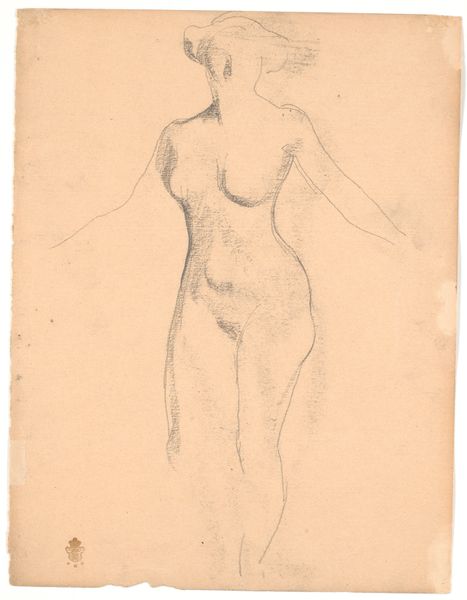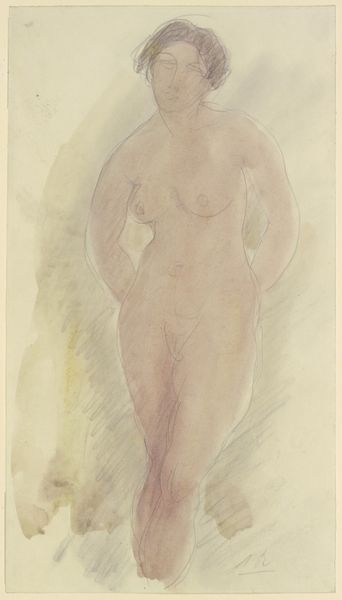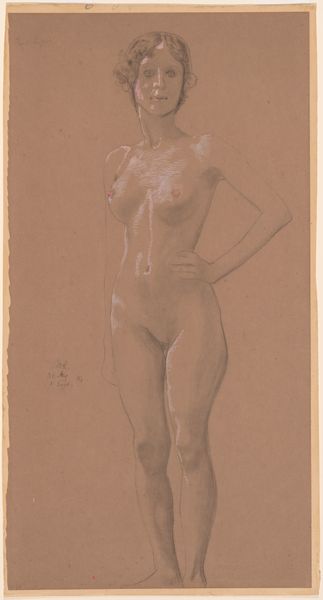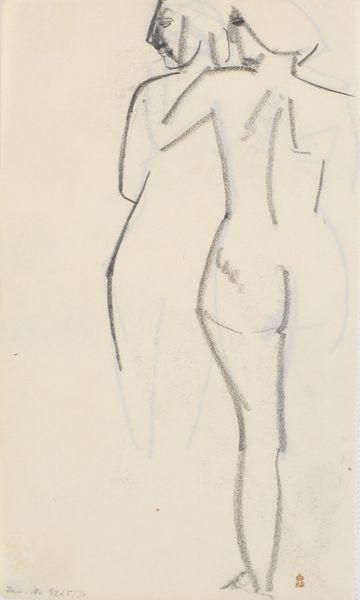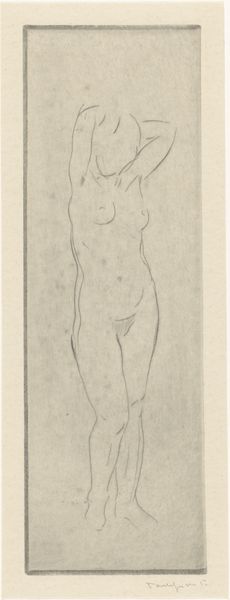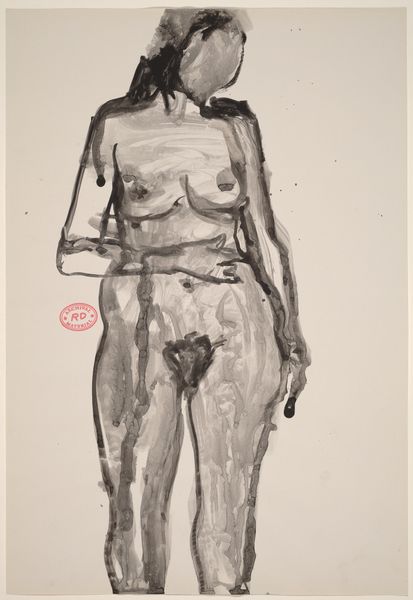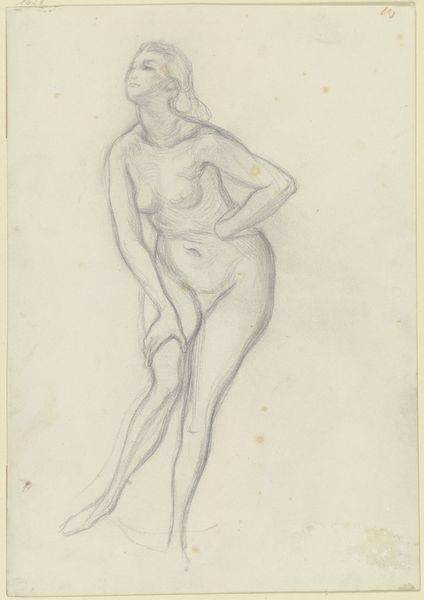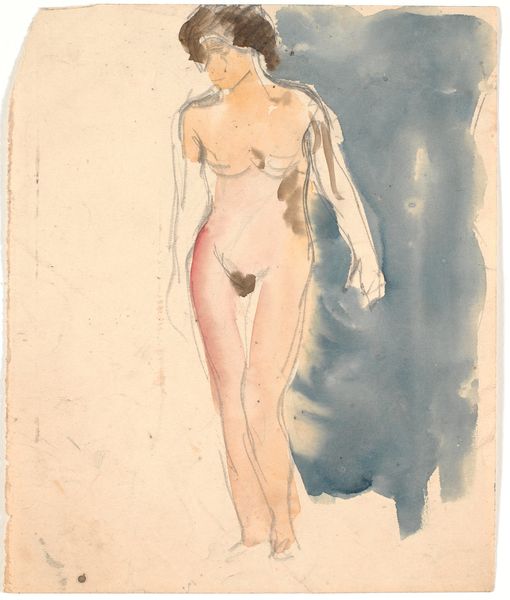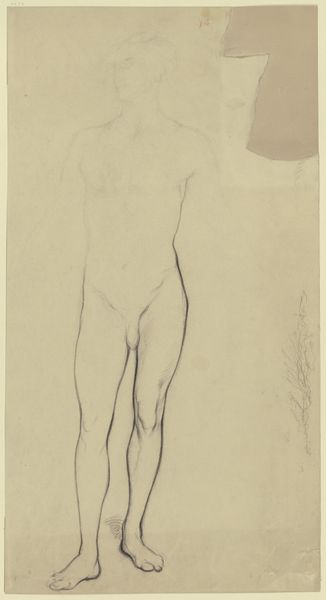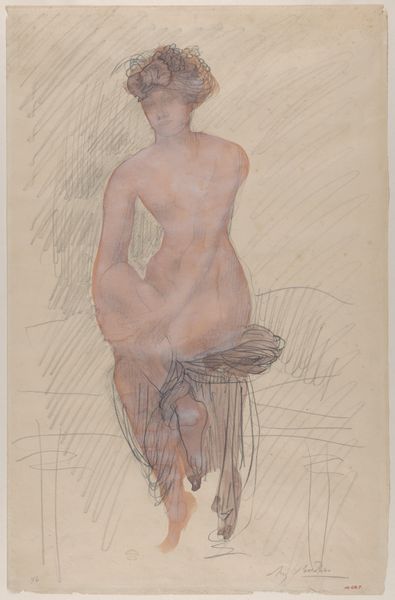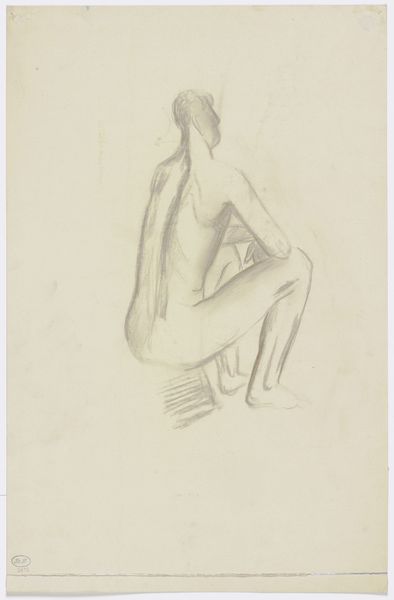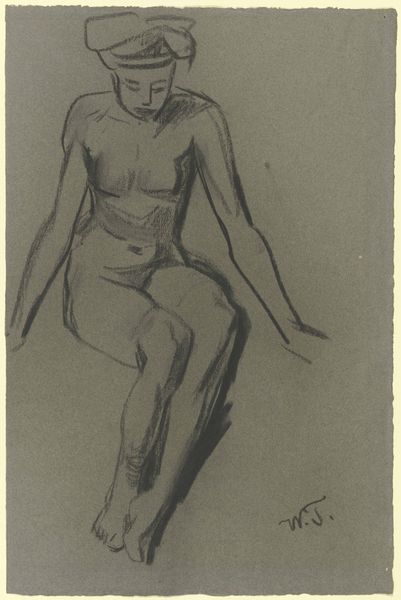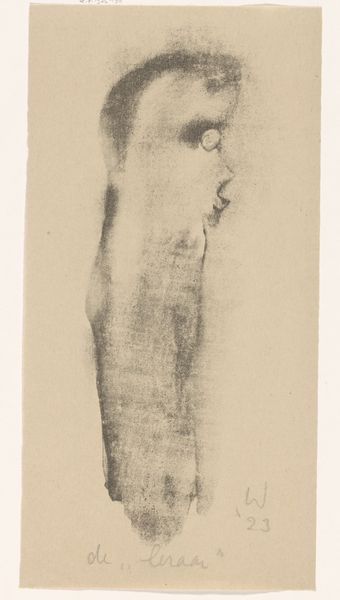
Dimensions: 19 3/8 x 12 5/8 in. (49.2 x 32.1 cm)
Copyright: Public Domain
Editor: Here we have Auguste Rodin’s watercolor and print work, "Origin of the Greek Vase," created sometime between 1900 and 1910. It reminds me of a figure slowly emerging from the darkness, almost sculpted by the shadows. What strikes you about the form in this piece? Curator: I am compelled by Rodin's handling of form and void. Note how the figure, defined primarily through washes of color rather than sharp lines, seems both present and ephemeral. Observe the limited palette, a subtle contrast of warm flesh tones against cool grays. Editor: It's interesting you mention the 'void' as I perceive it. How do you interpret its presence alongside the figure? Curator: The void is not merely negative space but an active participant. It shapes the figure, defines its contours, and ultimately contributes to its symbolic weight. Do you observe the directionality of the washes of color, their relationship to the suggestion of a vase shape? Editor: I see that now - the void defines the shape, mirroring the title! The strokes create the illusion of depth, despite the 2D plane. Curator: Precisely. The superimposition and use of printmaking create an intriguing juxtaposition that adds to the visual intrigue. The suggestive, almost incomplete quality of the image invites us to actively participate in its completion. Editor: This deep dive into pure form has reshaped my understanding. Thank you. Curator: Indeed. Through this careful assessment of form, light, and composition, we unveil the potent essence that transcends subject matter.
Comments
No comments
Be the first to comment and join the conversation on the ultimate creative platform.
